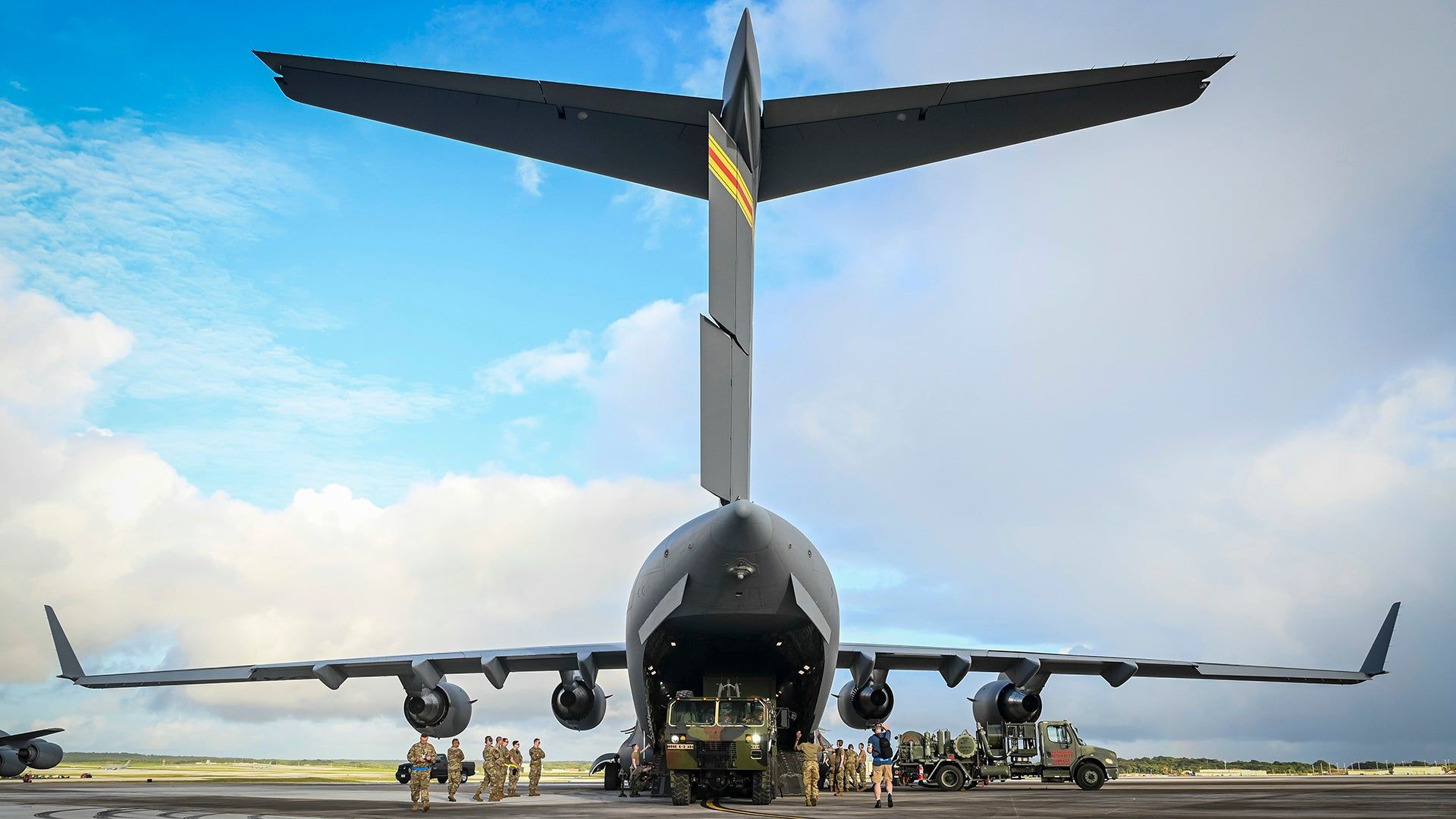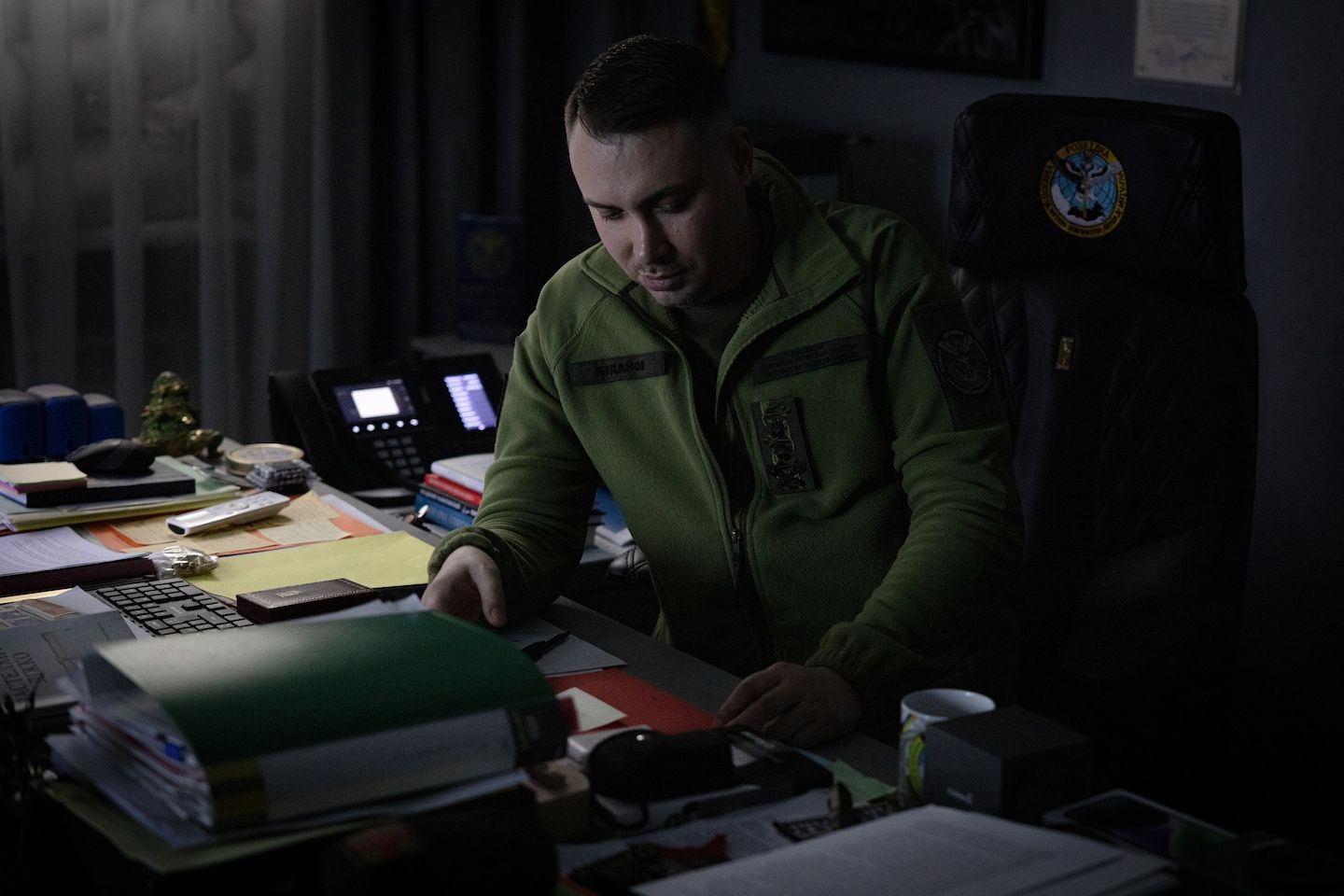Guam Hosts Air Force's Biggest Mobility Exercise As Fears Of Pacific Fight Grow
The largest iteration to date of Exercise Mobility Guardian, Air Mobility Command’s (AMC) premier training exercise, kicked off yesterday. Mobility Guardian 23 (MG23) sees major international participation from various air forces, evidenced by a Royal Air Force (RAF) Airbus A400M Atlas conducting its longest non-stop flight ever, traveling from the United Kingdom to Guam prior to the event. The exercise comes as the U.S. and its allies and partners look to challenge China in the Pacific.
MG23 is scheduled to run through July 21, according to a U.S. Air Force press release. 70 airlifters from seven participating countries – Australia, Canada, France, Japan, New Zealand, the United Kingdom, and the U.S. – are involved in the exercise. The aircraft, including C-17As, KC-46As, CC-130Js and A400Ms, among others, will operate from multiple locations across an area spanning some 3,000 miles, stretching from Northern Australia to Hawaii. According to the Air Force, MG23 will employ 3,000 personnel in direct support of the exercise.
Exercise Mobility Guardian is a biennial training exercise, the first of which took place in 2017.
Principally, MG23 involves cargo aircraft from the participating nations performing various mission types inside and outside of the context of a possible future conflict or other contingency. These include airlift, aerial refueling, aeromedical evacuation, the Global Air Mobility Support System (GAMSS), command and control, and humanitarian and disaster assistance. As the U.S. Air Force’s press release on MG23 stipulates, the exercise provides each participating nation with the opportunity to “enhance interoperability in operationally limited environments among multiple mission[s].”
“It should be evident by now that success of the Joint Force requires a capable and integrated Mobility Air Force [MAF],” said Gen. Mike Minihan, AMC commander. “MG23 will turn planned integration into operational integration within the theater, stretching MAF capabilities to meet future demands and, protect shared international interests with our Allies and partners.”
Of course, the three previous incarnations of Exercise Mobility Guardian in 2017, 2019, and 2021 – themselves a direct evolution of previous drills dating back to the 1950s – all took place over the continental U.S. MG23, however, seeks to address what Gen. Minihan describes as the “tyranny of distance” by conducting exercises in-theatre, specifically in the Indo-Pacific.
“Operation Mobility Guardian… normally just happens over the [continental U.S.] and we moved that into the theater that matters,” Minihan said at the AFA Warfare Symposium earlier in March in relation to MG23, Air and Space Forces Magazine reports. “We are going to understand intimately what the tyranny of distance is and what the tyranny of water is.”
As a prime example of the challenges faced by cargo aircraft traversing the Indo-Pacific, particularly from airbases further afield from the region, an RAF A400M conducted the longest-ever non-stop flight by that aircraft type to Andersen Air Force Base, Guam, in the days prior to MG23 starting.
Setting off from RAF Brize Norton, Oxfordshire, on July 3, the A400M flew for 22 hours nonstop according to the service. During the flight, the A400M was refueled three times – once over the Atlantic, once over Alaska, and finally over the Pacific Ocean. The first refueling was conducted by an Airbus Voyager from 10/101 Sqn. flying from the U.K., while the second and third were performed by a second Voyager that was operating from Eielson AFB in Alaska.
Infographic showing the flight plan of the RAF A400M. Royal Air Force
The route also took the Atlas closer to the North Pole over the Arctic ice cap than any previous flight by that aircraft type, according to the RAF. The wider Arctic region has become an area of heightened tension in recent years, which you can read about in these past War Zone features.
“The non-stop flight of the A400M Atlas from RAF Brize Norton to Guam is a great example of our ability to project air power, allowing us to get aircraft, crews and vital equipment to the other side of the world in a timely manner and for them to be able to operate immediately,” said Air Commodore Anthony Lyle, the RAF’s Air Mobility Force commander.
On top of aiding allied airlift integration, MG23 will also serve as the “cohesive glue” for a series of other exercises occurring across the Indo-Pacific this summer, according to Lt. Col. Jake Parker, MG23 exercise director. The War Zone has reached out to AMC for specifics on what this integration may involve.
Plans for MG23 have been in the pipeline for some time now. Over 200 planners from across AMC, including the headquarters staff, 18th Air Force, the 618th Air Operations Center and the U.S. Air Force Expeditionary Center, began outlining priorities for the event in the spring of 2022. In February this year, a five-day planning conference took place involving about 180 representatives from the seven countries involved alongside the U.S. Air Force, Army, Navy, Marine Corps, and the U.S. Department of State, Air and Space Forces Magazine reports. Specific tests of Air Force cargo aircraft have also been performed in preparation for MG23, such as the 305th Air Mobility Wing's White Stag exercise in March.
A C-17 Globemaster to be refueled by a KC-46 Pegasus over the Eastern seaboard, Mar. 9, 2023. The aerial refueling of the C-17 occurred during Exercise White Stag. U.S. Air Force photo by Senior Airman Joseph Morales
More broadly, MG23 falls in line with the Air Force’s Agile Combat Employment (ACE) concepts of operation. ACE is centered on irregular and unpredictable deployments at speed, something which the service has been testing specifically in the Indo-Pacific context for some time. Testing the role of cargo aircraft, both U.S. and allied, in the context of ACE also has particular relevance to a possible future conflict in the Indo-Pacific (likely involving China). As The War Zone has highlighted previously, this would likely feature distributed operations conducted from remote and austere islands.
Several senior U.S. military figures have recently called attention to the likelihood of a direct conflict involving the U.S. and China in the Indo-Pacific, including Gen. Minihan. Earlier this year, the AMC boss issued an ominous warning about a looming future high-end conflict against China, likely over Taiwan, in an internal AMC memo. In that memo, Minihan stated that the U.S. will likely find itself involved in a conflict with China in 2025, and that he is ultimately looking for "a fortified, ready, integrated, and agile Joint Force Maneuver Team ready to fight and win inside the first island chain." The area inside the "first island chain" is defined as being between mainland East Asia and a boundary formed by various archipelagos to the east, as seen in the map below.
A map showing the general area covered by the term "First Island Chain," as well as that of the "Second Island Chain" further out in the Pacific. DOD
With existing cargo aircraft proving vulnerable to the sort of high-end scenario a conflict with China could pose, MG23 provides an opportunity to test their pitfalls in-theatre during training exercises. Various senior U.S. military leaders have been very open in recent years about concerns that existing aerial refueling and airlift capacity could be strained, potentially close to a breaking point, in a high-end fight such as with China. Before the introduction of more survivable next-generation airlifters and tankers, exercises like MG23 will play an important role in figuring out how new and novel capabilities can make ACE and other distributed concepts of operation work with existing airlifters and tankers.
MG23 also aims to address specific gaps in integration between allied and partner nations in the context of airlift. “Can we operate at the tempo required to win? Can we operate at the tempo greater than our potential adversaries?” Mininhan noted in March at the AFA Symposium. “These gaps require integration.… You cannot have integrated operations if you do not have integrated planning in advance.”
“We’ll learn something,” Mininhan said regarding MG23 in March. “Some things won’t go perfect and we’ll go back and we’ll work harder to get it and we’ll close gaps as quick as we can.”
Above all else, a fight in the Pacific will be one hugely dominated by complex logistics. Airlift will be absolutely key to that fight, so seeing MG23 occur in that same theater is both relevant and telling.
Source: The War Zone


